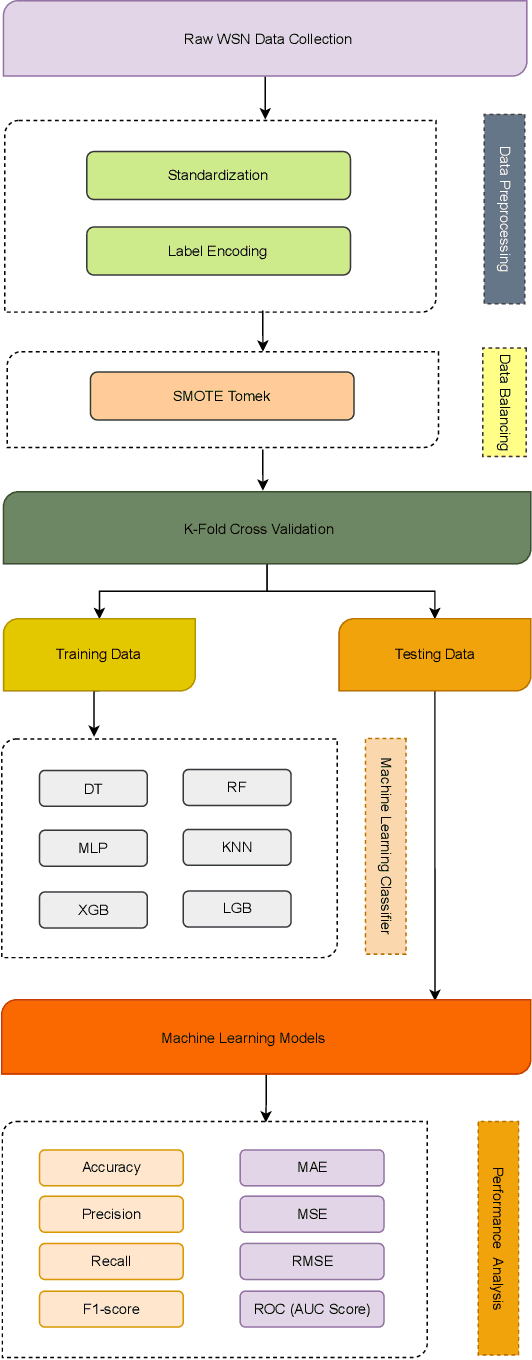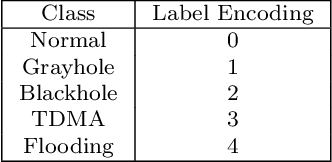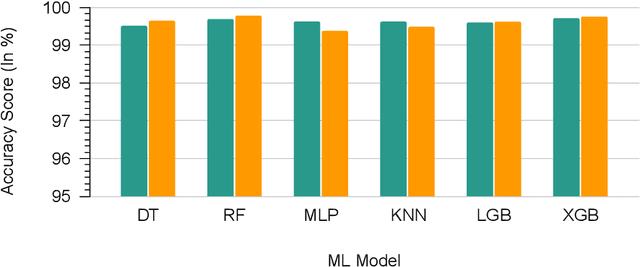Selina Sharmin
MLSTL-WSN: Machine Learning-based Intrusion Detection using SMOTETomek in WSNs
Feb 22, 2024



Abstract:Wireless Sensor Networks (WSNs) play a pivotal role as infrastructures, encompassing both stationary and mobile sensors. These sensors self-organize and establish multi-hop connections for communication, collectively sensing, gathering, processing, and transmitting data about their surroundings. Despite their significance, WSNs face rapid and detrimental attacks that can disrupt functionality. Existing intrusion detection methods for WSNs encounter challenges such as low detection rates, computational overhead, and false alarms. These issues stem from sensor node resource constraints, data redundancy, and high correlation within the network. To address these challenges, we propose an innovative intrusion detection approach that integrates Machine Learning (ML) techniques with the Synthetic Minority Oversampling Technique Tomek Link (SMOTE-TomekLink) algorithm. This blend synthesizes minority instances and eliminates Tomek links, resulting in a balanced dataset that significantly enhances detection accuracy in WSNs. Additionally, we incorporate feature scaling through standardization to render input features consistent and scalable, facilitating more precise training and detection. To counteract imbalanced WSN datasets, we employ the SMOTE-Tomek resampling technique, mitigating overfitting and underfitting issues. Our comprehensive evaluation, using the WSN Dataset (WSN-DS) containing 374,661 records, identifies the optimal model for intrusion detection in WSNs. The standout outcome of our research is the remarkable performance of our model. In binary, it achieves an accuracy rate of 99.78% and in multiclass, it attains an exceptional accuracy rate of 99.92%. These findings underscore the efficiency and superiority of our proposal in the context of WSN intrusion detection, showcasing its effectiveness in detecting and mitigating intrusions in WSNs.
Machine learning-based network intrusion detection for big and imbalanced data using oversampling, stacking feature embedding and feature extraction
Jan 22, 2024Abstract:Cybersecurity has emerged as a critical global concern. Intrusion Detection Systems (IDS) play a critical role in protecting interconnected networks by detecting malicious actors and activities. Machine Learning (ML)-based behavior analysis within the IDS has considerable potential for detecting dynamic cyber threats, identifying abnormalities, and identifying malicious conduct within the network. However, as the number of data grows, dimension reduction becomes an increasingly difficult task when training ML models. Addressing this, our paper introduces a novel ML-based network intrusion detection model that uses Random Oversampling (RO) to address data imbalance and Stacking Feature Embedding based on clustering results, as well as Principal Component Analysis (PCA) for dimension reduction and is specifically designed for large and imbalanced datasets. This model's performance is carefully evaluated using three cutting-edge benchmark datasets: UNSW-NB15, CIC-IDS-2017, and CIC-IDS-2018. On the UNSW-NB15 dataset, our trials show that the RF and ET models achieve accuracy rates of 99.59% and 99.95%, respectively. Furthermore, using the CIC-IDS2017 dataset, DT, RF, and ET models reach 99.99% accuracy, while DT and RF models obtain 99.94% accuracy on CIC-IDS2018. These performance results continuously outperform the state-of-art, indicating significant progress in the field of network intrusion detection. This achievement demonstrates the efficacy of the suggested methodology, which can be used practically to accurately monitor and identify network traffic intrusions, thereby blocking possible threats.
 Add to Chrome
Add to Chrome Add to Firefox
Add to Firefox Add to Edge
Add to Edge